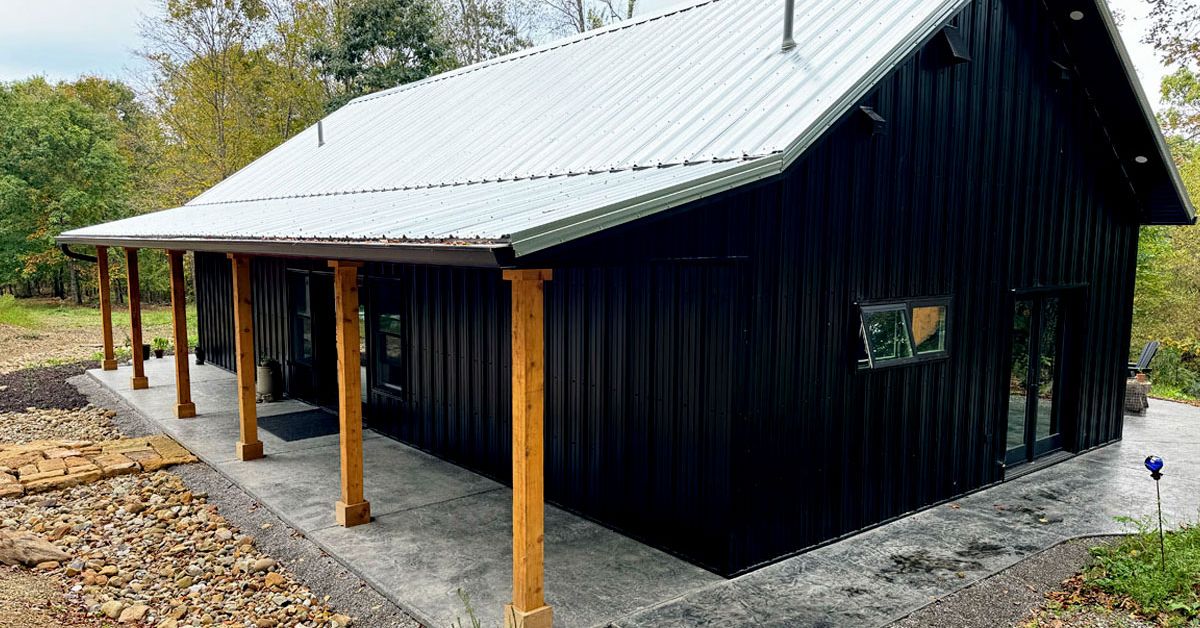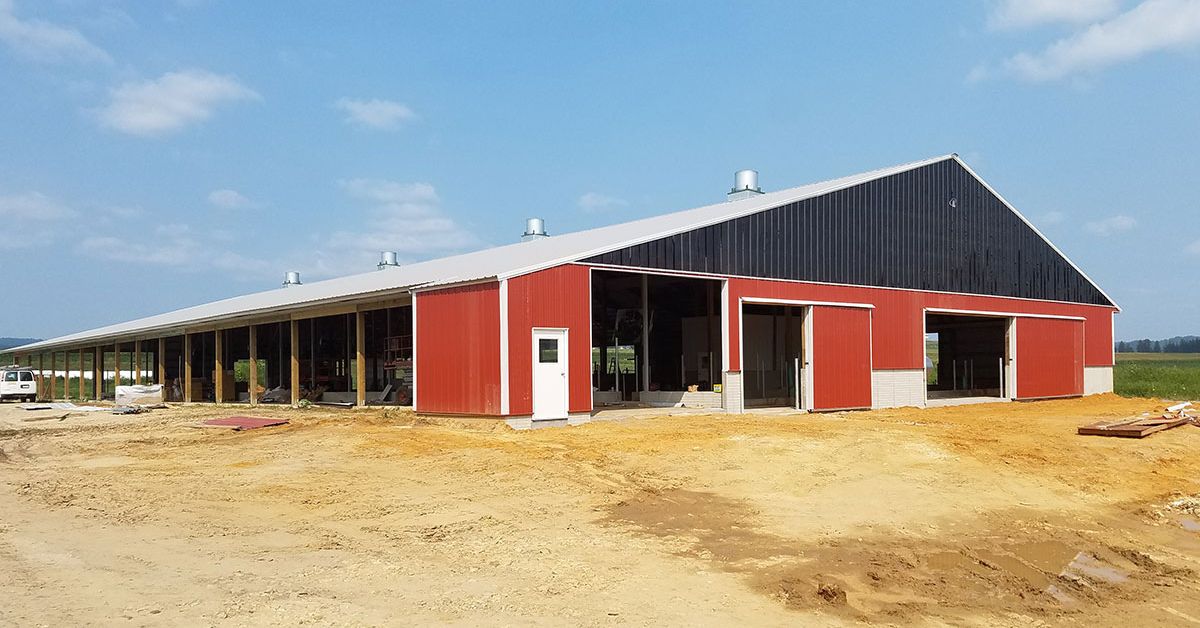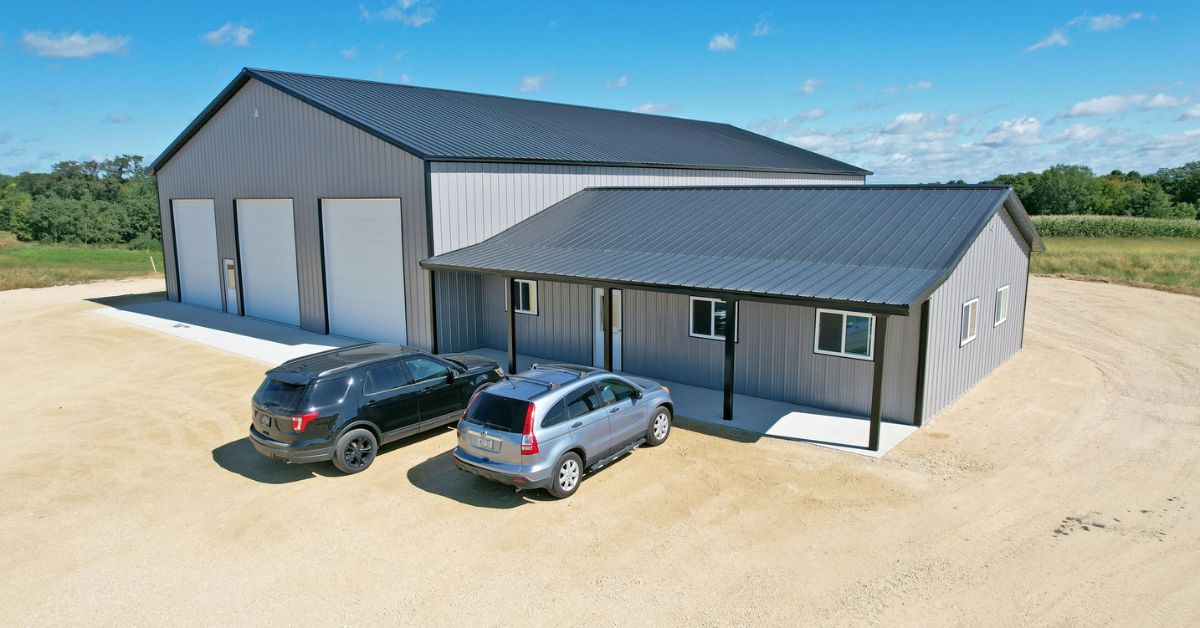How a Well-Planned Pole Barn Can Improve Your Farm Workflow
.jpg)
Farm efficiency is all about implementing systems and structures that make every task smoother, safer, and more productive. One of the most impactful investments you can make for your agricultural operation is a well-designed pole barn. The construction method for pole barns creates large, open interior spaces without the need for load-bearing walls.
Traditional barns have served farmers for centuries, and modern pole barns offer distinct advantages that can transform how you manage your daily operations. From housing livestock to storing equipment and creating dedicated workspaces, here’s how a well-planned pole barn can improve your farm workflow.
Comparing Pole Barns and Regular Barns
Regular barns typically require extensive foundation work, complex framing systems, and significant time to construct. They often cost more upfront and offer less flexibility for future modifications.
In contrast, pole barns can be erected quickly with minimal site preparation. Their post-frame construction creates wide-open spaces without interior support columns, giving you maximum usable space. This design also makes them easier to customize and expand as your farm grows or your needs change.
Enhanced Storage Solutions
A well-planned pole barn can solve multiple storage issues simultaneously. The open design allows you to create dedicated zones for different materials. You can have feed storage in one area, tools in another, and seasonal equipment along the walls.
Vertical storage becomes much more practical with the high ceilings typical of pole barns. You can install overhead storage systems for items used less frequently, keeping your floor space clear for daily operations. The wide door openings mean you can easily move large equipment in and out without the constraints of smaller traditional barn doors.
Efficient Livestock Management
Livestock management becomes significantly more streamlined when you have adequate space. Pole barns can be configured with wide alleyways that allow animals to move naturally without stress, reducing handling time and improving animal welfare.
The open design also improves ventilation, which is crucial for animal health. Better air circulation means fewer respiratory issues, reduced moisture buildup, and overall healthier livestock. You can position feeding areas, watering systems, and holding pens in logical sequences that minimize the time and effort required for daily care routines.
Improved Workspace
Every farm needs dedicated workspace for repairs, maintenance, and various projects. A pole barn can house a workshop area that’s protected from the weather while providing the space needed for larger projects.
Good lighting and electrical systems can be easily installed during construction, creating a workspace that’s functional year-round. The concrete floors typical in pole barns provide a stable, clean surface for detailed work, while the open ceiling allows for overhead lifts or hoists when needed.

Cost-Effective Construction
The construction efficiency of pole barns translates directly into cost savings that improve your farm’s bottom line. Less foundation work, simpler framing, and faster construction times mean lower labor costs and quicker project completion.
These savings can be significant enough to allow for larger buildings or additional features that might not be feasible with traditional construction. The money saved on construction can be invested back into farm operations, equipment, or other improvements that enhance productivity.
Customization and Flexibility
Farm needs evolve constantly, and pole barns can adapt with you. The open design makes it relatively simple to reconfigure interior spaces, add partitions, or modify the layout as your operations change. What starts as equipment storage might later become livestock housing or be converted to accommodate different types of animals.
Door and window placement can be customized based on your specific workflow patterns. If you need drive-through access for cleaning or feed delivery, large doors can be positioned on opposite ends. If natural light is important for you, additional windows can be incorporated into the design.
Protection From the Elements
Bad weather can disrupt farm operations and damage valuable equipment, feed, and livestock. A well-designed pole barn provides reliable protection that keeps your operation running regardless of the conditions outside.
Proper ventilation design ensures protection without creating stuffiness or moisture problems. Roof overhangs can provide additional weather protection for equipment or animals that need to be positioned near building openings.
Increased Property Value
Well-constructed agricultural buildings add significant value to farm property. Potential buyers recognize the utility and cost savings that come with existing barn infrastructure, making your property more attractive if you ever decide to sell.
Banks and lenders also tend to view adequate barn infrastructure favorably when evaluating farm loans or refinancing applications. The practical value of improved workflow and storage often translates into improved farm profitability, which can benefit your overall financial position.
Streamlined Equipment Maintenance
Equipment maintenance becomes much more manageable when you have adequate covered space to work. Instead of performing maintenance outdoors in variable weather conditions, a pole barn allows you to maintain equipment on schedule regardless of the season.
Indoor maintenance also means better working conditions for you, leading to more thorough and consistent equipment care. This can extend equipment life and reduce unexpected breakdowns during critical farming periods.
Environmentally Friendly
Modern pole barn construction often incorporates environmentally friendly features that benefit both your operation and the surrounding environment. For example, proper runoff management systems can be integrated into the design to prevent water pollution from wash areas or livestock housing.
Energy-efficient lighting and ventilation systems can reduce power consumption while maintaining optimal conditions inside the building. Some designs incorporate renewable energy systems such as solar panels, which work particularly well with the large, unobstructed roof surfaces typical of pole barns.

Adapting to Future Needs
Farm operations frequently change, and the flexibility of pole barn design helps you adapt to shifting markets, regulations, or operational focuses. For example, a dairy operation might transition to beef cattle, or a grain farm might add livestock enterprises. Pole barns can accommodate these transitions with relatively minor modifications.
The open design also makes it easier to incorporate new technologies as they become available. Automated feeding systems, environmental monitoring equipment, or other technological advances can often be retrofitted into existing pole barn structures.
The Benefits of Prefabricated Building Solutions
Prefabricated pole barn systems offer additional advantages for busy farmers. These systems come with engineered designs that ensure structural integrity while speeding up the construction process. All materials are typically included, reducing the time spent sourcing components and ensuring compatibility between different building elements.
Professional engineering and design services often come with prefabricated systems, helping ensure your building meets local codes and serves your specific needs effectively. Many manufacturers also provide warranties and ongoing support to give you confidence in your investment.
Understanding how a well-planned pole barn can improve your farm workflow will pay dividends in time savings, reduced stress, and improved productivity. A well-planned pole barn is an investment in the efficiency and profitability of your entire farm operation, and the pole barn buildings from Lester Building Systems are the affordable option you’ve been looking for. With us as a partner, you can design a structure that truly enhances your daily routines.
